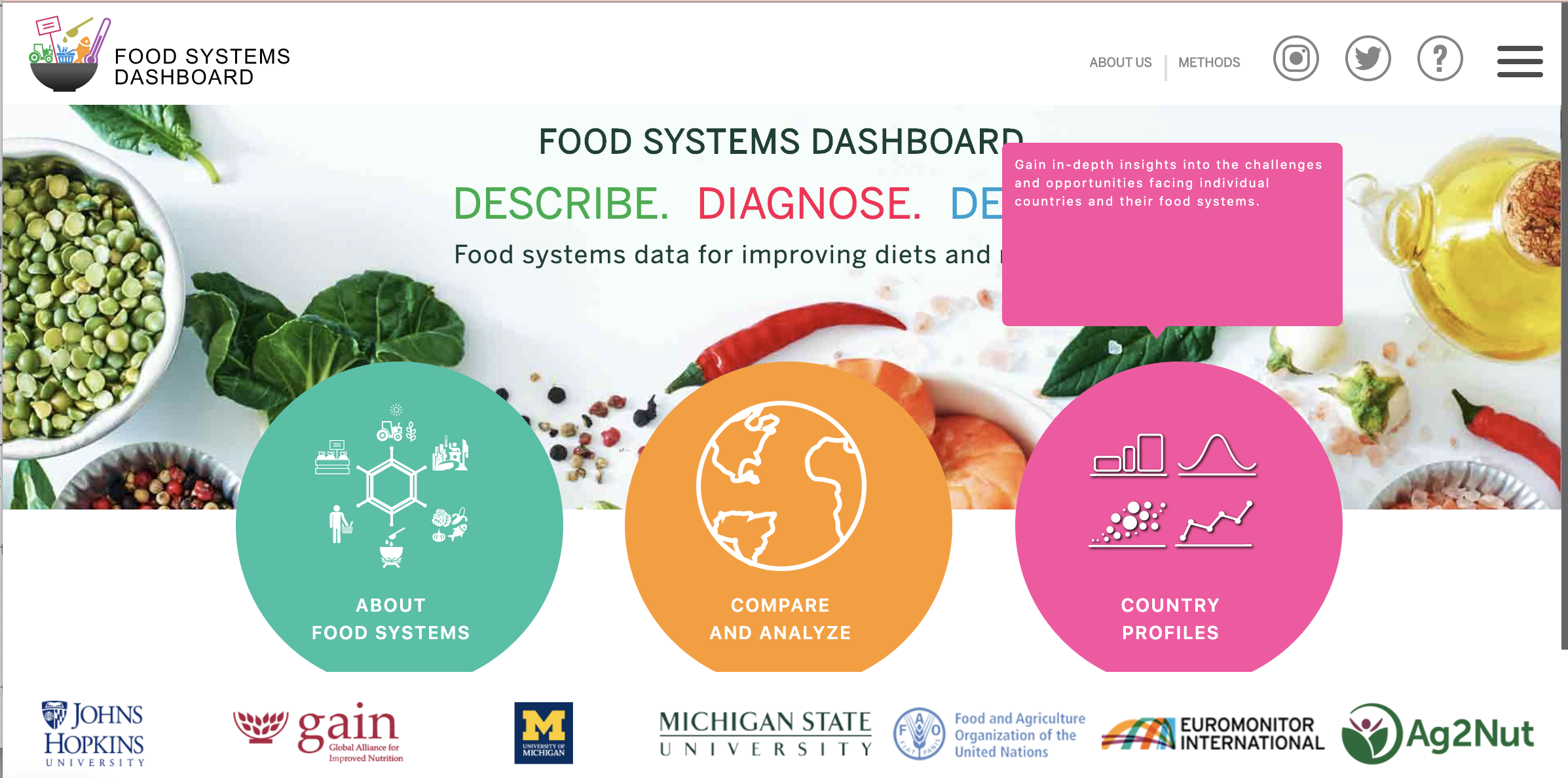Finally, a one-stop shop for researching food systems data
Jim Giles
Fri, 06/19/2020 – 00:15
Parts of our food systems are so bewilderingly complex that attempts to answer even basic questions can result in hours of frustrated searching. If you can relate to this, I have some good news for you — not quite a fully-fledged solution, but certainly a step toward one.
The genesis of this solution dates to around six years ago, when Lawrence Haddad, who leads the nonprofit Global Alliance on Improved Nutrition, was editing an article on nutrition. “The authors had so little data to go on they had to make crazy assumptions about food systems,” he recalled when we spoke this week.
Haddad and his co-editor, Jessica Fanzo of Johns Hopkins University, set about assembling the people and funding needed to fix that. Earlier this month, they unveiled the Food Systems Dashboard. “It’s very much something we built in our garages in evenings and weekends,” Haddad said. “Much to our surprise, it has gathered momentum. We now see the potential is huge.”
The dashboard is a data smorgasbord that covers everything from food waste and greenhouse gas emissions to food security and agricultural productivity. In total, there are more than 170 indicators, culled from 35 sources and covering nearly every country. There are gaps in the coverage, which Haddad says the team is working to fix, but the dashboard looks likely to become a first point of call for questions about food systems.
It’s for governments and businesses — the people who make decisions about actions.
Poking around it this week, for instance, I found it easy to check something I had been curious about: Are young people in the United States eating more vegetables? Sadly not. Consumption hasn’t changed much in a decade. Presumably, this is related to other data I came across in the dashboard: The quantity of vegetables available per person in the U.S. food supply has been trending slowly down over the past 20 years.
Businesses also can benefit from exploratory analyses such as these, suggested Haddad. There’s data on food infrastructure, government regulations and the amount of money that families have available to spend on food, all factors that guide decisions about whether to move into an emerging market. “If this is only for researchers, we’ve failed,” Haddad said. “It’s for governments and businesses — the people who make decisions about actions.”
To make the dashboard more useful, the team is working on adding subnational data for large countries and developing guides for specific types of users. The dashboard also likely will be used by the United Nations’ Food and Agriculture Organization as part of its 2021 Food Systems Summit.
If your organization has thoughts on data you’d like to see added to the dashboard, Haddad and the dashboard team invite you to drop them a line via the site’s contact form. As always, I’d also love to hear your thoughts on this project and other issues you’d like to see covered in Food Weekly. You can reach me at jg@greenbiz.com.
This article was adapted from the GreenBiz Food Weekly newsletter. Sign up here to receive your own free subscription.
Technology
Data




